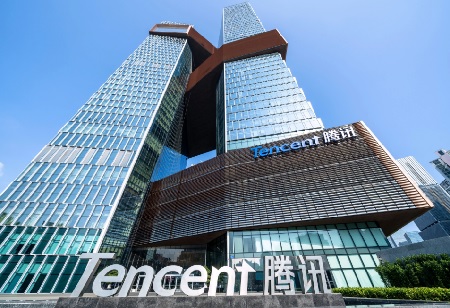
Tencent Cloud Rolls out Upgraded Version of Cloud-Native Database TDSQL-C

 Tencent Cloud recently released a new version of its cloud-native database, TDSQL-C with comprehensive upgrades in its cloud-native architecture, basic hardware capabilities, engine kernels, and other aspects. The upgraded version covers L2 cache based on Intel ® Optane ™ persistent memory, full link RDMA network, 24/7 continuous lock-free backup and other core functions. It is also worth mentioning that the performance test[1] results show that in the full cache scenarios and large data set scenarios, the performance of the upgraded TDSQL-C surpasses other cloud-native database products in China, and achieves a 200% performance improvement compared to traditional cloud databases.
Tencent Cloud recently released a new version of its cloud-native database, TDSQL-C with comprehensive upgrades in its cloud-native architecture, basic hardware capabilities, engine kernels, and other aspects. The upgraded version covers L2 cache based on Intel ® Optane ™ persistent memory, full link RDMA network, 24/7 continuous lock-free backup and other core functions. It is also worth mentioning that the performance test[1] results show that in the full cache scenarios and large data set scenarios, the performance of the upgraded TDSQL-C surpasses other cloud-native database products in China, and achieves a 200% performance improvement compared to traditional cloud databases.
TDSQL-C is a new generation of cloud-native relational database developed by Tencent Cloud. It provides enterprises with extremely elastic, high-performance, high-availability, high-reliability, and secure database services. TDSQL-C delivers high-throughput with millions of queries per second (QPS), massively distributed intelligent storage and serverless with second-level scaling.
The upgraded TDSQL-C is equipped with many optimizations on top of Tencent's own database kernel for cloud-native database scenarios, including dirty page flush mechanism, transaction conflict resolution and redo log flush mechanism etc. It can better meet enterprises' ultimate pursuit of database performance.
Poshu Yeung, Senior Vice President, Tencent Cloud International said, "Tencent Cloud has always been at the forefront in terms of new-generation digital technologies, assisting companies across the globe to achieve business upgrades through innovative products and solutions. We are thrilled to launch the upgraded TDSQL-C product internationally, and are looking forward to providing high-performing cloud-native database services for more and more overseas enterprises to power up their businesses in the future."
TDSQL-C leverages on new hardware features to constantly optimize the product architecture and technical implementation. Through joint innovation with Intel's technology team, Tencent Cloud DBMS's R&D team redesigned TDSQL-C's L2 cache with the latest generation of Intel ® Xeon ® scalable processors and Intel ® Optane™ Persistent Memory (PMem) hardware features. The new design improved the read-and-write performance of TDSQL-C in IO-bound scenarios by more than two times.
The upgraded TDSQL-C has fully enhanced its network architecture. It adopts a full-link RDMA network, relying on features such as zero copy, kernel bypass, and no CPU intervention to further optimize the performance of the critical path between the storage layer and computing layer as well as between the storage layer and its storage replicas. In the upgraded network architecture, I/O is no longer a bottleneck and request latency could be reduced by up to 80%.
To measure the performance of the upgraded TDSQL-C, the Tencent Cloud team has conducted performance tests for comprehensive scenarios, including write-only, read-only and mixed read-write scenarios with the benchmark tool Sysbench and the fully simulated business production environment. The test results show that the performance of TDSQL-C leads similar products in the market manifoldly, and fully meets the requirements of enterprises for database performance. The test data in the report is only the result of a single node. TDSQL-C for MySQL supports second-level scale-out, helping enterprises with read performance improvements by more than 1500%.
In the scenarios of e-commerce flash sale, recommendation, live video streaming, and hot data access in the gaming business, it is usually necessary to put all the data in the cache, and there is no need to read and write the disk to update the cache during the query process. The test report shows that in the full cache scenario, the larger the instance size, the more obvious the performance advantage of TDSQL-C MySQL. After the 32-core specification, the performance of the traditional cloud MySQL database has reached a bottleneck in read-only scenarios, while TDSQL-C for MySQL can further improve the QPS by increasing the CPU.
Compared with the full cache scenario, the big data set scenario appears more frequently in real business use. In the usage scenario of massive data, it is often necessary to read and write disks and update the cache during the query and update process. In the read-only scenario of large data sets, the performance of TDSQL-C for MySQL exceeds that of similar products in the market in the general scenario of mixed read and write, and as the size increases, the performance advantage becomes more and more obvious.
TDSQL-C for MySQL adopts the design concept of "storage and computing separation" and supports the storage of massive data in a single database exceeding 400TB. With the application of this feature, enterprises no longer need to shard their databases and tables to store historical archived data, which could easily lead to the phenomenon of "super-massive table". In the scenario of a single table with 4 billion records and a data storage space of 1TB, the TDSQL-C for MySQL still performs well. In the mixed read-write scenario, with the increase in database specifications, the performance of TDSQL-C for MySQL is 200% higher than that of the traditional cloud database MySQL, and it also outperforms other cloud-native databases.
TDSQL-C has provided stable and reliable enterprise cloud database services for users in different industries in China and around the world. It provides a complete set of database O&M solutions such as backup, recovery, monitoring, second-level scale-out, and data transmission, helping enterprises simplify IT operation and maintenance and focus more on business development.

